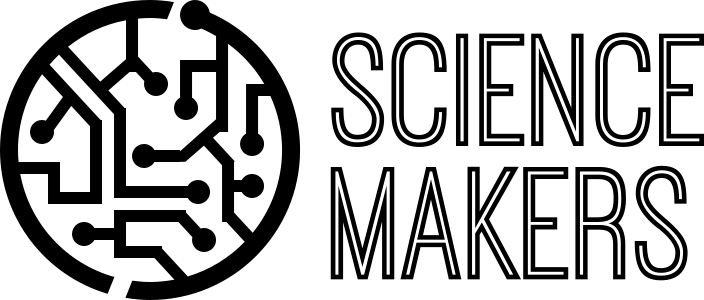
Submitted by Jenny Molloy on Thu, 30/11/2017 - 14:13
The SynBio SRI event series Science Makers took on the theme of DIY DNA circuits in November 2017. Attendees constructed a NAND logic gate and a DIY visualiser using an LED grid and laser cut box designed by Helene Steiner, a member of the SRI Steering Committee.
Cell-free synthetic biology is bringing engineering with DNA out of labs and into the community. It uses biochemical extracts from bacteria or other organisms containing all of the machinery need to transcribe and translate DNA into protein. These can be directly 'programmed' by adding DN. For example, recent work combining this emerging technology with paper-based microfluidics has delivered rapid, low-cost paper tests for Ebola and Zika Virus and small molecule sensors such as glucose assays, which are stable in dried form for at least one year. Several groups have also experimented with encoding ‘logic gates’ that respond in different ways to particular combinations of inputs or provide quantitative results.
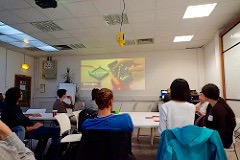
There is no genetic modification involved and a fully equipped lab is not required once the cell-free extract is produced and stably dried down, making this technology far more accessible and vastly lowering the initial cost of engineering biosensors. As part of the SynBio SRI's ongoing series of activities in cell-free synthetic biology, we used our monthly Science Makers meeting to bring the technology to engineers, programmers and makers at Cambridge Makespace.
During the session, attendees attempted to build a NAND gate using DNA logic by creating an AND gate and adding an inverter at the end, in addition to building a DIY 'transilluminator' so the resulting green fluorescent protein could be visualised.
Talks
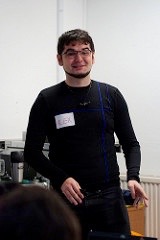
First up, SRI Steering Committee member Helene Steiner (Cell-Free Technology) introduced the concept of cell-free and how the extract is made, then proceeded to explain the Bixel device that the teams would be making later. This is an 8x8 grid of individually programmable LEDs that can be controlled with a mobile phone app. By adding a light diffuser and a blue filter, the correct wave length to excite green fluorescent protein (GFP) can be created and a laser-cut cardboard box and amber filter give everything you need to take photos of expressed GFP, which is a common marker to show your test or circuit is working.
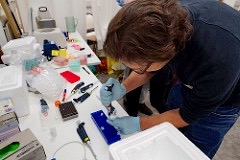
Secondly, Sina Schack and Alex Grigoroiu from the Sensor Doctoral Training Centre explained their team project designing and prototyping an arsenic biosensor. Their sensor produces glucose oxidase in the presence of arsenic which is detected electrochemically on a device that can send data from remote field locations such as wells in Bangladesh and Nepal, where arsenic contamination has been described as the ‘largest mass poisoning of a population in history’ (WHO, 2002). The team built an arsenic sensitive genetic circuit, tested multiple electrochemistries, and designed an open source potentiometer that is 10% the cost of commercially available options for almost equivalent functionality.
Making
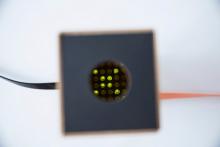
After a brief introduction to regulation of DNA expression and to logic gates, we attempted to make a NAND gate: an electronic circuit that gives a high output if any of its inputs are low. We had partial success although one of the circuits did not give the expected result, possible due to leaky expression of one of the factors that forms the AND gate. It was an excellent introduction to practical skills in biology for those who have not experienced pipetting before
When not pipetting, the participants put together their Bixels and started programming them to light up in patterns and even play Tetris! Helene is part of a team who recently launched a Kickstarter for the Bixel, if you would like your own to play with at home.


